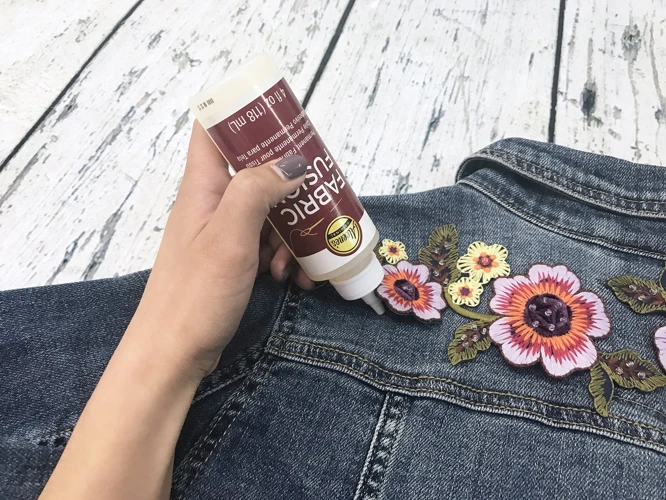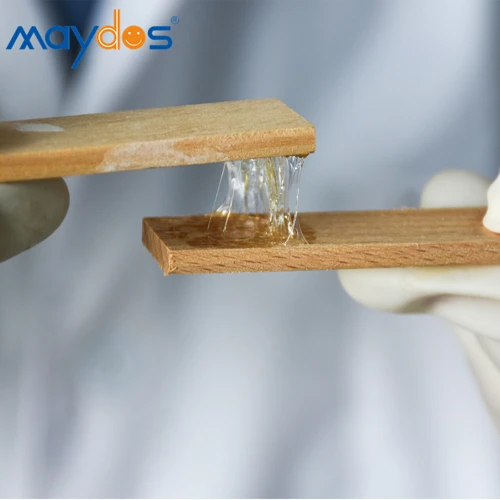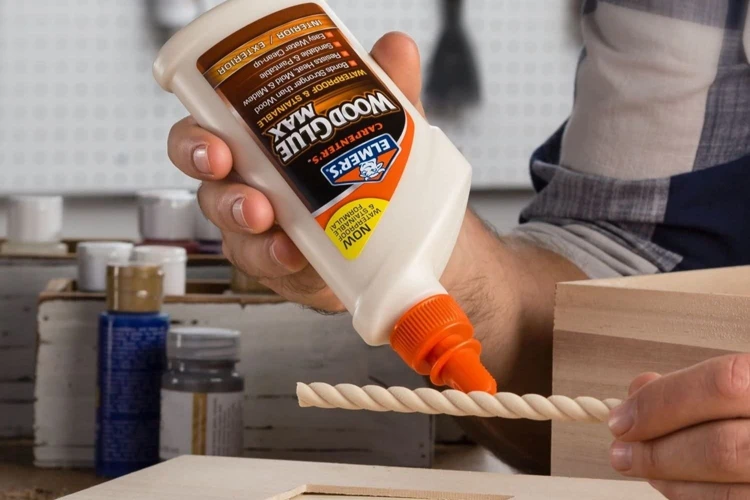Introduction
When it comes to personal style, a leather jacket with patches can make a bold statement. Whether you want to show support for a cause or add some flair to your wardrobe, it’s important to ensure your patches stay securely attached to your beloved leather jacket. Gluing patches on a leather jacket can be a great solution, but it’s important to do it correctly to avoid damaging your jacket or the patches. In this step-by-step guide, we’ll break down everything you need to know to successfully glue patches onto your leather jacket. So grab your supplies, and let’s get started!
Why Glue Patches on a Leather Jacket?
Gluing patches onto a leather jacket is a popular way to personalize your jacket. It can give your jacket a unique look and make it stand out from the rest. Gluing patches onto a leather jacket can also be more affordable than purchasing a customized jacket, and you can be more creative with the patches you choose. Some popular patches to glue on a leather jacket include band logos, flags, and logos of favorite brands.
Gluing patches on your jacket can also be an excellent way of covering a worn-out or torn section of the leather. Instead of throwing away your damaged jacket, you can simply cover the damaged area with a patch. This is especially true if the jacket has sentimental value to you.
It is essential to note that not all patches can be glued onto a leather jacket. When picking patches to glue, it is crucial to choose those that are specifically designed for that purpose. For instance, patches that are not made of leather material may not adhere to the leather jacket properly. Also, patches with adhesives already on them may not stick well to a leather jacket. Hence, it is best to purchase patches without adhesive backings.
Gluing patches onto a leather jacket is not difficult, and with the right tools and materials, you can complete it within a short time. However, you need to take some safety precautions and necessary steps to ensure that the patches adhere correctly. The next section of this article will highlight what you need to know before starting.
To learn more about how to glue different materials, check out this article how to glue on rhinestones.
What You Need to Know Before Starting
Before you start gluing patches onto your leather jacket, there are a few things you need to consider. Here are the important factors you need to know before you start:
- Type of Leather: You need to know the type of leather of your jacket to ensure that the glue you choose is compatible with it. Certain types of leather require a specific type of glue for the patches to properly adhere. If you are unsure of what type of leather your jacket is made of, then check with the manufacturer or a leather specialist.
- Patch Material: The type of material of your patch also plays a role in the type of glue you will need. If the patch is made of fabric or vinyl, then a basic fabric glue, such as E6000 glue, can be used. However, if the patch is made of suede, foam rubber or pearls, then you may need a glue that is specifically designed for these materials. For more information on gluing other types of materials, check out our articles on what glue to use on suede, how to glue foam rubber, or how to glue pearls.
- Application: Do you want your patches to have a permanent or temporary hold? Depending on your preference, you need to choose a glue that suits your needs. If you want a temporary hold, then you can choose a glue that is easily removable. However, for a more permanent hold, you need to choose a stronger adhesive. Make sure you know what type of hold you want before choosing a glue.
- Test Patch: Before proceeding with gluing all of your patches onto your jacket, it is a good idea to do a test patch. Apply your chosen glue onto a small corner piece of fabric of your jacket and patch. Wait for a few minutes to see if it holds well and doesn’t damage the fabric. This way, you can avoid any mishaps and ensure that the adhesive will work for both your jacket and patch.
By keeping these factors in mind, you can be sure to have a successful patch application onto your leather jacket. You can also check out our other crafting articles such as how to stiffen fabric with glue, how to make felt flowers without glue, how to glue vinyl fabric or how to cover a book with fabric and glue to enhance your crafting skills!
Preparing Your Jacket and Patches
Before gluing patches onto your leather jacket, it’s important to prepare both the jacket and patches to ensure the best adhesive bond possible. This step is crucial for making sure the patches stay in place and don’t fall off over time. Follow these tips for prepping your jacket and patches to make sure your DIY patch project looks professional and lasts. Don’t forget to choose the right glue, which will be discussed in the next section. If you’re curious about how fabric glue stacks up to other types of glue, check out our article on how good fabric glue really is.
Cleaning Your Jacket
Before gluing patches onto your leather jacket, it’s crucial to ensure the surface is clean and free of dirt or debris. Follow these steps for the best results:
- Begin by dusting off the jacket: Use a soft-bristled brush or a lint roller to remove any loose dirt or debris from the jacket. This is an essential first step to avoid any dirt getting stuck under the patch.
- Wipe down the surface: Use a damp cloth to remove any remaining dirt or grime. Be sure to use only water or a leather cleaner made specifically for your type of leather. Do not use soap or other harsh chemicals that can damage the leather.
- Dry the jacket: After cleaning, allow the jacket to air dry completely before proceeding. Do not use a dryer or other heat sources as these can cause the leather to crack or warp.
- Check for any stains: Look for any stains or discoloration on the leather. If you notice any, it is recommended to treat them before proceeding with patch gluing, as the glue may not adhere properly to stained areas.
By ensuring that your leather jacket is clean and free of any dirt or debris, you can help guarantee that the glue adheres properly to the surface, resulting in a more secure patch.
Preparing the Patches
Before gluing patches onto your leather jacket, it’s important to properly prepare the patches. Here are the steps to follow:
Cut patches to the desired size: Use sharp scissors to cut your patch to the size and shape you desire. Keep in mind that the patch should be proportionate to the size of your jacket.
Remove the backing: Most patches come with a backing that needs to be removed before gluing. Carefully remove the backing and discard it.
Test the patch on the jacket: Before applying the glue, place the patch on the jacket to determine its placement and ensure that it fits properly. Make sure you’re happy with the placement before proceeding with the glue.
Smooth out the patch: If your patch is wrinkled or creased, use a warm iron to smooth it out. Place a cloth between the iron and the patch to avoid damaging it.
Once you’ve successfully prepared your patches for gluing, you’re ready to move onto the next step.
Choosing the Right Glue
When it comes to choosing the right glue for gluing patches on a leather jacket, you need to be careful to select a glue that is strong enough to hold the patch securely in place, but at the same time, won’t damage the leather. There are a wide variety of glues available in the market, and it can be difficult to choose the right one for your needs.
Types of Glue: One of the most popular types of glue used for leather is contact cement. This adhesive forms a strong, permanent bond and is also waterproof, which makes it perfect for gluing patches onto leather jackets. Another option is rubber cement, which also forms a strong bond and is easy to work with. However, rubber cement isn’t always waterproof, which can be a disadvantage in certain situations. Another type of glue that works well on leather is epoxy glue, which creates a permanent bond and is waterproof.
Considerations: When choosing the right glue for your leather jacket patches, you should also take into consideration the color of the glue. In most cases, clear glue is ideal, but if you’re working with a darker leather jacket, you may want to consider using a colored glue that matches the color of the leather. Another important factor to consider is how quickly the glue sets. Some glues may set very quickly, which can be useful when you want to save time, but can also be challenging if you need to reposition the patch.
Testing Glues: Before applying any glue to your leather jacket, it’s important to test it on a small area first. This will help you to determine if the glue causes any discoloration or damage to the leather. If you’re unsure about which glue to use, you can always consult with a professional leatherworker or a local craft store.
When it comes to choosing the right glue for gluing patches on a leather jacket, it’s important to consider factors such as the strength of the bond, color, and how quickly it sets. By taking the time to find the right glue for your needs, you can ensure that your patches will stay firmly in place on your leather jacket for years to come.
Applying the Glue
Now that you’ve prepared your jacket and patches, it’s time to apply the glue. This step is crucial in ensuring that your patches adhere to your leather jacket and stay in place. But which glue should you use? And how do you apply it correctly? Don’t worry, we have you covered with all the details you need to know. Keep reading to find out how to apply glue to your patches and securely attach them to your leather jacket.
Applying Glue to the Patch
Before applying glue to the patch, you want to make sure you have chosen the right type of glue for the job (which we’ll discuss later in the article). Once you have the proper glue in hand, follow these steps to apply it to the patch:
- Clean the patch: Wipe down the patch with a clean cloth to remove any dust or debris. Make sure the patch is completely dry before moving on to the next step.
- Apply the glue: Squeeze a small amount of glue onto the back of the patch. You don’t need to use too much – a little goes a long way. If the patch has any small or intricate details, apply the glue carefully around them to ensure they are also attached securely to the jacket.
- Distribute the glue: Use your fingers or a small brush to spread the glue evenly across the back of the patch. Make sure you cover the edges of the patch with glue so that it adheres securely to the jacket.
- Let the glue dry: Wait for the glue to become tacky before attaching the patch to the jacket. This usually takes a few minutes, depending on the type of glue you are using.
Remember, you want to apply the glue to the patch – not the jacket. Applying the glue to the jacket could result in a messy and uneven application, which may affect the overall quality of the finished product. By following these simple steps, you can ensure that your patches are applied smoothly and securely to your leather jacket.
Placing the Patch on the Jacket
When placing the patch on the jacket, it is important to align it properly to ensure it looks neat and professional. Here’s how you can do it:
1. Position the Patch: Start by placing the patch on the intended spot on the jacket. Double-check if it is in the correct position and if it is straight.
2. Mark the Patch: Use a fabric pen or chalk to mark the edges of the patch. This will help you accurately place the patch once you apply glue.
3. Apply the Glue: Apply glue to the back of the patch using a brush or toothbrush. Make sure to spread it evenly across the patch, paying extra attention to the edges.
4. Place the Patch: Carefully place the patch on the marked spot. Start from the center and smooth outwards to avoid any air bubbles under the patch.
5. Press the Patch: Use a roller or the back of a spoon to firmly press the patch down onto the jacket. This will help ensure the glue adheres properly.
6. Clean up the Edges: If any glue has seeped out from under the edges, use a cotton swab dipped in rubbing alcohol to clean it up. Be careful not to disturb the patch while doing this.
7. Let it Dry: Let the patch sit for at least 24 hours to dry completely. Avoid wearing the jacket or washing it during this time.
By following these steps, you can ensure your patch is securely glued onto your leather jacket.
Allowing the Glue to Set
Once you have applied the glue to your patch and attached it to your leather jacket, it is essential to allow the glue to set properly before you move on to the next step. Rushing this process may result in the patch coming loose and ruining all your hard work.
Step 1: Make sure not to touch the patch for at least an hour after you have applied the glue. This will give enough time for the glue to dry and achieve a strong bond.
Step 2: Keep the jacket and patch in a dry, cool place to ensure that the glue dries completely. Avoid exposing the jacket to heat or sunlight, as this can cause the glue to loosen or weaken.
Step 3: Leave your jacket untouched for at least 24 hours to ensure that the glue has completely set and formed a strong bond. It’s important not to wear or use the jacket during this time, as any movement or strain on the patch can loosen the bond.
Step 4: If you have applied glue to multiple patches, make sure to follow the same process for each one. Do not be tempted to check the bond before the glue has had time to set, as this can cause damage to the patches or jacket.
Remember, allowing the glue to set is a crucial step in the patch applying process, and rushing it can result in costly mistakes. So be patient and wait for the glue to dry and set thoroughly, ensuring your patches remain securely attached to your leather jacket for years to come.
Verifying the Hold
After applying glue and placing the patches on your leather jacket, it’s crucial to ensure that the hold is secure. The last thing you want is for your patches to come loose and fall off after all your hard work! In this step, we’ll go over a few ways to verify the hold and confirm that your patches are securely attached to your leather jacket. Let’s dive in and make sure those patches stay in place!
Checking for Loose Edges
After the patch has been glued onto the leather jacket, it is important to check for loose edges to ensure that the patch stays in place and looks neat. Here are the steps to follow when checking for loose edges:
- Inspect the Edges: Once the glue has dried, carefully inspect the edges of the patch to see if there is any lifting or peeling. Use a magnifying glass if necessary.
- Lightly Tug: Gently tug on the edges of the patch to check if they feel secure. Be careful not to pull too hard as this could damage the patch or jacket.
- Additional Glue: If you find any loose edges, apply a small amount of glue to the underside of the patch and press firmly onto the jacket. Use a cotton swab or toothpick to apply the glue in small amounts and avoid getting it on any visible parts of the patch.
- Repeat the Process: Allow the glue to dry for another 12-24 hours and repeat the inspection process to ensure that the patch is completely secure.
Checking for loose edges is an important step in the patch gluing process as it ensures that the patch stays in place and looks neat on the jacket. By carefully inspecting the edges, lightly tugging, and adding additional glue if necessary, you can have confidence that your patch will stay in place for a long time.
Confirming the Patch is Secure
Once the glue has had ample time to dry, it’s important to confirm that the patch is securely attached to your leather jacket. While it may appear to be holding firm, it’s still possible that the edges of the patch aren’t fully glued down or that there are gaps where the glue didn’t adhere.
To confirm the patch is secure, start by visually inspecting it. Look for any visible signs of lifting or edges that are not fully adhered. Additionally, you can run your fingers over the edges of the patch to feel for any rough or lifted areas.
One effective way to ensure that your patch is securely attached is by performing a pull test. This involves gently pulling on the edges of the patch to test its strength. To perform the test, grip the edges of the patch with your fingers and carefully pull away from the jacket. If the patch feels firm and does not lift away from the jacket, then it is well secured. However, if the patch peels away or feels loose, then additional glue may need to be applied.
Another way to confirm the patch’s secure hold is by using a weight test. This involves placing a heavy object, such as a book, on top of the patch and leaving it for a period of time. This will help to ensure that the patch remains firmly in place, even under pressure.
Table:
| Confirmation Method | How to Perform | Result |
| Visual Inspection | Look for lifted edges or gaps in the glue | No lifted edges or gaps in the glue |
| Pull Test | Grip the edges of the patch and pull away from the jacket | Patch feels firm and does not lift away from the jacket |
| Weight Test | Place a heavy object on top of the patch and leave it for a period of time | Patch remains firmly in place, even under pressure |
By confirming the security of your patch, you can be confident that it will stay in place and look great for years to come.
Additional Tips and Tricks
Now that you know how to glue patches on a leather jacket, it’s important to keep in mind a few additional tips and tricks to make the process easier and ensure a successful outcome.
Use a Toothpick or Cotton Swab for Precision: When applying glue to the patch or jacket, it can be tricky to get the glue in the exact spot you want it. To make sure you have precision, use a toothpick or cotton swab to place the glue in the right spot.
Don’t Overuse Glue: While it’s important to make sure the patch is secure, too much glue can cause clumping or seeping through the patch. Use only a small amount of glue for each patch.
Avoid Stretching the Jacket: When placing the patch on the jacket, make sure you do not stretch or pull the jacket. This can cause the patch to shift or become misaligned.
Use a Hot Iron to Secure the Patch: After the glue has dried, place a piece of fabric over the patch and use a hot iron to set the glue. This can help the patch bond even better to the jacket and ensure a tighter hold.
Test the Glue on a Small Area First: If you are using a new brand of glue or are unsure of how a particular glue will interact with your leather jacket, it’s always good to test it on a small, unobtrusive area first. This can help you know whether the glue is safe for your jacket and prevent any unwanted or irreversible damage.
By following these additional tips and tricks, you can ensure that your leather jacket patching goes smoothly and you achieve the desired results. Happy patching!
Conclusion
In conclusion, gluing patches on a leather jacket can seem like a daunting task, but with the right materials and techniques, it can be a simple and satisfying DIY project. Following the step-by-step guide outlined in this article, you can achieve a professional-looking result that will make your leather jacket stand out.
Remember to always clean the jacket and prepare the patches before beginning, and to choose the right type of glue for your project. This will ensure a strong hold and a long-lasting result.
Additionally, be sure to allow the glue to set properly before verifying the hold and making any final adjustments. Checking for loose edges and securing the patch firmly in place will prevent it from peeling or falling off over time.
As with any craft project, there are always additional tips and tricks you can use to improve your results. For example, experimenting with different placement options for your patches can help you achieve a unique and personalized look.
With patience, attention to detail, and a little creativity, gluing patches on a leather jacket can be a fun and rewarding activity. So go ahead, give it a try, and enjoy the satisfaction of customizing your favorite leather jacket.
Frequently Asked Questions
Can I glue patches on any type of leather jacket?
It’s best to avoid gluing patches on suede or nubuck leather jackets, as the adhesive may not hold well.
What type of glue works best for leather jackets?
A strong fabric glue or a leather glue are both good options for gluing patches onto a leather jacket.
Do I need to clean my jacket before applying the patches?
Yes, it’s important to clean any dirt or oils on the surface of the leather to ensure the glue will bond properly.
Do I need to sew patches onto a leather jacket?
No, sewing is not necessary if you use a strong fabric glue or a leather glue.
How long does the glue take to set?
This will depend on the type of glue you use. Refer to the instructions on the glue packaging for specific drying times.
Can I remove a patch from my leather jacket?
Removing a patch may damage the leather. It’s best to leave the patch on unless it becomes damaged or you no longer want it on the jacket.
Can I glue patches onto faux leather jackets?
Yes, you can use glue to attach patches to faux leather jackets.
Do I need to apply glue to the edges of the patch?
No, applying glue to the edges of the patch may cause it to become stiff and not lay flat on the jacket.
What should I do if the glue shows through the patch?
If the glue shows through the patch, try using a clear fabric glue or a clear leather glue.
Can I wear my jacket right after gluing on the patches?
No, it’s best to allow the glue to fully dry and set before wearing the jacket to ensure the patches stay securely in place.





